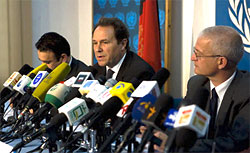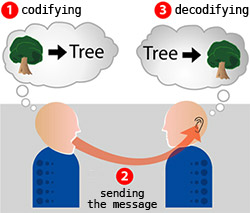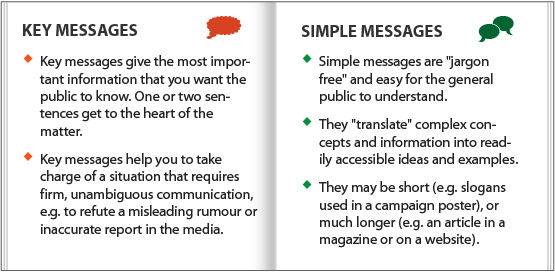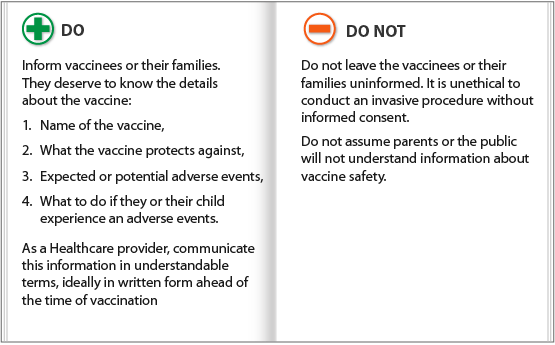Simplified and key messages

In earlier modules and in the previous case study, we described and illustrated how you communicate complex detailed information about AEFIs accurately and systematically, using the approved procedures for reporting adverse events to higher levels (e.g. the NRA). The focus of this module is to support your ability to communicate appropriately targeted and simplified messages about vaccine safety to relevant audiences.

Source: wikipedia.org
It is important to be clear about key messages and simple messages. To frame your communication simply and clearly, while covering all the essential points, you first need to know:
- Who is your intended audience?
- What is their background knowledge, attitudes and beliefs about vaccination?

Question
Example key messages of a statement developed to respond to a public concern about a cluster of fatal AEFIs:
- Three children died after immunization with measles vaccine at a Central Clinic,
- Investigations found the cause of death is not due to the vaccine, but to problems arising from unsterile needles,
- Measles causes 750 000 deaths and debilitating disease in children worldwide every year,
- The measles vaccine is the only effective measure in the world for the control of measles,
- Staff training in injection safety and infection control will be prioritized to prevent similar adverse events from occurring.
Look at the example key messages. Which of the five categories of AEFI that you have learnt in Module 1 is the cause of the problem here?
The AEFIs are due to an immunization error as the investigation revealed that unsterile needles had been used.
To avert this practice, WHO recommends the use of sterile, disposable auto-disable (AD) syringes![]() Auto-disable (AD) syringesAD syringes are self-locking syringes that can be used only once. AD syringes are the preferred equipment for immunizations requiring injections. with attached needles for all vaccine injections; AD syringes cannot be used a second time because the plunger "locks" when it has been pushed forward to deliver the vaccine and it cannot be pulled back.
Auto-disable (AD) syringesAD syringes are self-locking syringes that can be used only once. AD syringes are the preferred equipment for immunizations requiring injections. with attached needles for all vaccine injections; AD syringes cannot be used a second time because the plunger "locks" when it has been pushed forward to deliver the vaccine and it cannot be pulled back.
Note how the key messages are listed to support the main message of the statement:
- Information specifying the event,
- Possible cause of the AEFI,
- Scientific evidence on the disease,
- Scientific evidence on the vaccine,
- Response undertaken to respond to the event.
Refrain from over-simplifying or withholding information
Vaccination clinic staff may fear that raising the topic of vaccine-associated risks with members of the public may cause alarm and generate concerns about vaccination where none existed previously. Some health workers may also be tempted to omit certain information about vaccine safety to parents, guardians or vaccinees, assuming a lack of understanding on their part. In particular, health workers may believe that members of the public cannot absorb complex scientific information, for example, about how the immune system responds to a vaccine and why vaccine reactions sometimes occur. For the same reason, health workers may be hesitant to explain the risks and benefits of a vaccine using the background rate of an adverse event, the rate of the same event in the vaccinated population, and how the population risk relates to the risk of an AEFI occurring in a vaccinated individual.

Key point
It is important to emphasize that it is unethical to conduct an invasive procedure such as immunization without first obtaining informed consent from the vaccinee or from a responsible adult in the case of a child.
True consent cannot be given unless the essential information has been communicated to the target audience in simple, accessible language that enables the listener to reach an informed decision.

